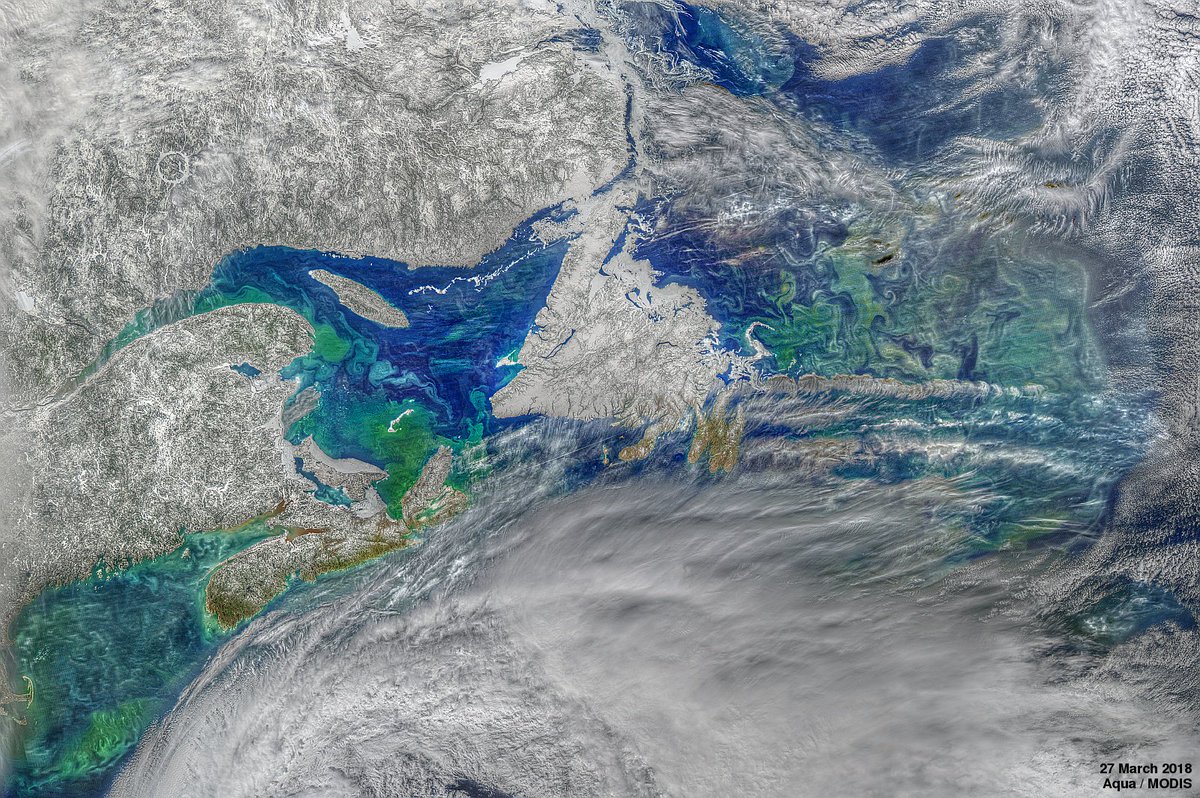Tens of thousands of brine shrimp swimming upward in a laboratory tank produce a large jet of water the size of the whole group, mixing shallow water with deeper, saltier water.
In the ocean, daily, vertical migrations of similarly small swimmers such as krill may cause large-scale mixing, bringing up key nutrients from the deep.
From ScienceNews by Carlyn Gramling
When it comes to tiny ocean swimmers, the whole is much greater than the sum of its parts.
Ocean turbulence stirred up by multitudes of creatures such as krill can be powerful enough to extend hundreds of meters down into the deep, a new study suggests.
Brine shrimp undergo a daily, vertical migration, rising up at night to
find food in surface waters and diving down during the day to hide from
predators.
In the ocean, such migrations can span hundreds of meters.
photo : Isabel Houghton
photo : Isabel Houghton
Brine shrimp moving vertically in two different laboratory tanks created small eddies that aggregated into a jet roughly the size of the whole migrating group, researchers report online April 18 in Nature.
With a fluid velocity of about 1 to 2 centimeters per second, the jet was also powerful enough to mix shallow waters with deeper, saltier waters.
Without mixing, these waters of different densities would remain isolated in layers.
The shrimp represent centimeter-sized swimmers, including krill and shrimplike copepods, found throughout the world’s oceans that may together be capable of mixing ocean layers — and delivering nutrient-rich deep waters to phytoplankton, or microscopic marine plants, near the surface, the researchers suggest.
“The original thinking is that these animals would flap their appendages and create little eddies about the same size as their bodies,” says John Dabiri, an expert in fluid dynamics at Stanford University.
Previous work, including acoustic measurements of krill migrations in the ocean (SN: 10/7/06, p. 238) and theoretical simulations of fluid flow around swimmers such as jellyfish and shrimplike copepods (SN: 8/29/09, p. 14), had suggested that they may be stirring up more turbulence than thought.
Swarms of tiny oceanic organisms known collectively as zooplankton may have an outsize influence on their environment.
New research shows that clusters of centimeter-long individuals, each beating its tiny feathered legs, can, in aggregate, create powerful currents that could potentially mix water over hundreds of meters in depth.
This effect could potentially influence everything from distribution of ocean nutrients to climate models.
In 2014, Dabiri coauthored a study that debuted the laboratory tank setup also used in the new research.
That paper noted that migrating brine shrimp created jets and eddies much larger than themselves.
“But there was skepticism about whether those lab results were relevant to the ocean,” Dabiri says. The 2014 study didn’t account for how ocean water stratifies into layers that don’t easily mix, due to differences in salinity or temperature.
It wasn’t clear if shrimp-generated turbulence could be strong enough and extend deep enough to overcome the physical barriers and mix the layers.
Brine shrimp illuminated by an LED array swim upward in a water tank (4x speed)
“Individually, we are one drop. Together, we are an ocean,”
said the Japanese writer Ryunosuke Satoro.
The new research used a 1.2-meter-deep tank and a 2-meter-deep tank.
Each held tens of thousands of wiggly brine shrimp in two layers of water of different densities.
The researchers used LED lights to prompt the shrimp to migrate upward or downward, mimicking the massive daily, vertical migrations of krill, copepods and other ocean denizens.
The shrimp migrated in close proximity to one another – and that helped to magnify their individual efforts, the scientists found.
“As one animal swims upward, it’s kicking backward,” Dabiri says.
That parcel of water then gets kicked downward by another nearby animal, and then another.
The result is a downward rush that gets stronger as the migration continues, and eventually extends about as deep as the entire migrating group.
In the ocean, that could be as much as hundreds of meters.
“At the heart of the investigation is the question about whether life in the ocean, as it moves about the environment, does any important ‘mixing,’ ” says William Dewar, an oceanographer at Florida State University in Tallahassee.
“These results argue quite compellingly that they do, and strongly counter the concern that most marine life is simply too small in size to matter.”
Spring has sprung in the North Atlantic Ocean!
This vibrant phytoplankton bloom was captured through cloudy skies by Aqua/MODIS on March 27th. (NASA)
The team’s finding opens the door to a host of interesting questions, Dewar adds.
Ocean mixing is an important part of the global climate cycle: It churns up nutrients that feed phytoplankton blooms and aids the exchange of gases with the atmosphere.
Adding biologically driven mixing to physical processes in the ocean makes the equation even more complex, he says.
The next step will be to try to observe the effect at sea, using shipboard measurements, Dabiri says.
“Previous studies looked for turbulence or eddies on the scale of the animals’ size,” he says, instead of large downward jets.
“This paper tells us for the first time what to look for.”
Links :
- IBTimes : These Tiny Sea Dwellers Are Exceptionally Good At Mixing Ocean Waters: Study
- KCur : Swarms Of Tiny Sea Creatures Are Powerful Enough To Mix Oceans, Study Finds
- The Scientist : Tiny Shrimp Mix Up the Ocean
- Inverse : Ridiculously Small Animals Churn Ocean Waters in 'Heretical' Marine Study
- ZME Science : Strength in numbers: tiny shrimp might be capable of mixing the ocean



No comments:
Post a Comment